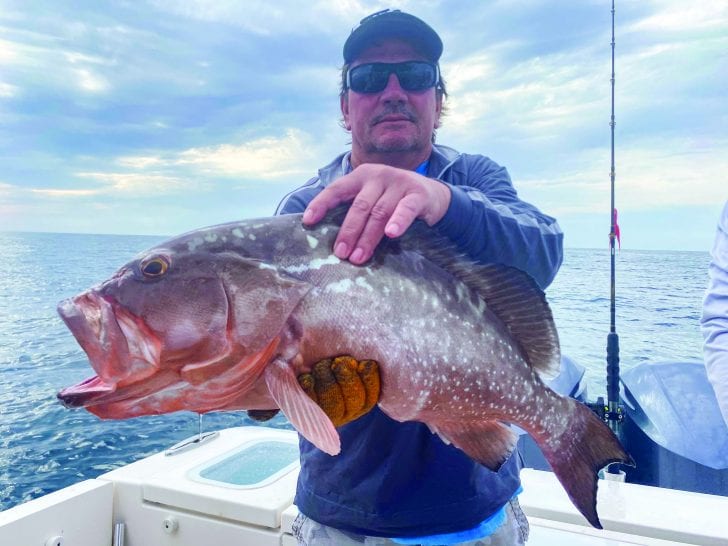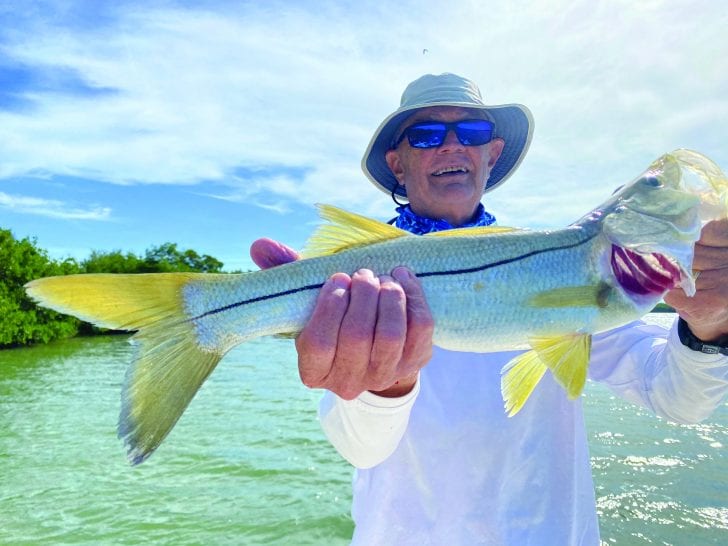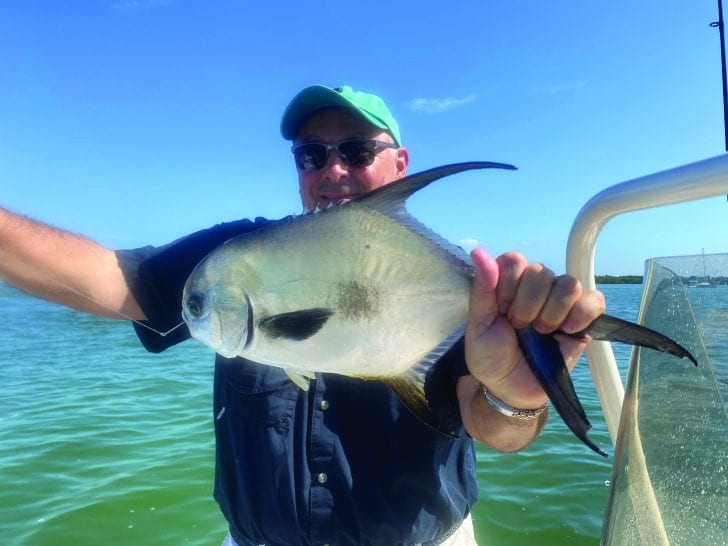by Captain Terry Fisher
I always look forward to the month of June for fishing and boating as foul, windy weather has virtually played out and more consistent weather patterns, supported by good, strong tides, afford opportunity that previous months do not offer notwithstanding the fact that it does get hot. Morning fishing is much more pleasant than fishing in the mid to late afternoons.
Last month the FWC reconsidered harvesting regulations on species such as, snook, redfish and seatrouts, so be sure and know any new rules and regulations. Unfortunately, as of this writing, the decision for re-opening harvesting for the above species had not been determined. The months of March, April and May produced some of the biggest seatrouts that I have caught in a number of years. Lots of small trout and lady fish as well. If I had anything to say about harvesting of trout, redfish and snook; my suggestion is to keep harvesting closed (or at least a short open season) for another year to allow full recovery from the fish kill of three years ago.


These higher and stronger tides provide opportunity for fishing the back country areas that become more productive larger numbers of redfish, seatrout and snook seek out these areas for protection and easy access to food around the oyster bars and mangrove roots more so than during the winter months when water levels are low. Long story short; the fish have more places to gather for eating and spawning. However, I suggest fishing the mangroves on the last half of an incoming tide and before the water levels get so high that the fish are able to retreat beyond any reasonable presentation be it live, dead or artificial. This type of circumstance will more often than not, require the use of a ‘chum bat’ to lure the fish that have taken temporary refuge deep into the mangroves, to take a chance and venture out to eat. Chumming pilchards, small pinfish or shrimps will usually do the trick. In conjunction with this, I prefer to fish the windward side of the islands, oyster bars and other structures. This is the easiest and most productive way to fish, just to mention that it makes casting much less tentative against the wind. I prefer a soft, southerly wind for best results.
Migrating tarpon will be here for most of the month. They will be in the passes, along the beaches and in the bay areas. The secret to catching these are to offer what they are eating (‘matching the hatch’) be it crabs, ladyfish, catfish fillets, pinfish, threadfins, etc. any of which can be fished under a cork or on the bottom, with or without weights.



This is Captain Terry Fisher of Fish Face Charters. Call me direct at 239-357-6829 to book a charter on my vessel or as Captain for Hire (by the hour) on yours inshore and offshore. I am also easily contacted at fishfacecharters@yahoo.com or check out my website at www.fishfacecharters.com.
